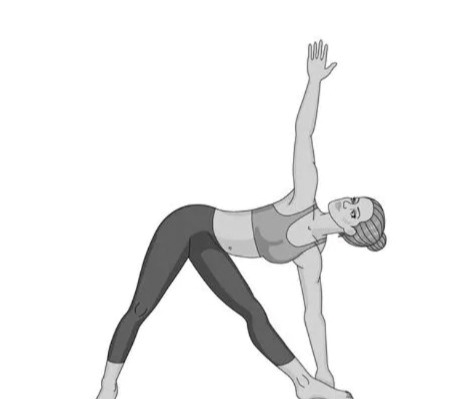9 Different Types Of Drishti In yoga | The Eye Play In Yoga
Drishti, or focused sight, is a way of creating full intention. It refers to the fifth limb of yoga, pratyahara, involving sensory withdrawal, and the sixth limb, Dharana, dealing with focusing. Drishti in yoga is the “focused gaze.” It is a technique used to improve focus in our practice. Similar to our Ujjayi breath, practicing Drishti helps you restore control of the distracted mind via sight.
Important of Drishti in yoga
In every asana, the required Drishti increases focus, supports movement and helps orient the pranic (energetic) body. The full significance of Drishti isn’t confined to its usefulness in asana. In Sanskrit, Drishti may also signify a vision, a point of view, or knowledge and insight.
9 Different forms of Drishti in yoga
In Dharana, we deal with establishing a single focus of concentration in preparation for meditation. After all, where your look travels, your attention and life force energies follow. Whether we are utilizing our Drishti to transfer attention inside or as a physical point of concentration, it is a directed gaze that is soft and gentle rather than an intense stare.
Drishti in yoga is divided into nine parts. In this article, you will discuss asanas with which they are most usually practiced. Your yoga and meditation practice will benefit significantly if you are familiar with the different Drishti. You may experiment with each of these in your next yoga class to see if they help you establish a better sense of balance and relax more deeply throughout your session.
1. Angusthamadhyam Drishti
One may find Angusthamadhyam in between the thumb’s nail and the first joint. Practices like Utkatasan, Urdhva Hastama, and Virabhadra A have included this Drishti into their poses.
2. Nasagra Drishti
Nasagra Drishti in yoga is focusing on the tip of the nose, the viagra Drishti sits. In the poses of chaturanga dandasana and urdhva mukha svanasana, it is most commonly used. Inversions, as well as sitting meditation postures such as padmasana, all make use of viagra.
3. Hastagram Drishti
As the name suggests, hastagram Drishti is a subtle hand or finger imprinting. Utthita trikonasana and utthita parshvakonasana are good examples of this.
4. Parsva Drishti, Left and Right Side
We may glance at two possible directions in Parva Drishti: to the left or the right. This gaze has two distinct Drishti, depending on which side we’re gazing at. In a spinal twist, it usually moves in lockstep with the head. Both utthita par Vanita and Ardha matsyendrasana, for example, require you to rotate your head to the left or right depending on the direction you are twisting in. This two drishti may be seen as an extension of your spinal twist, with your gaze extending beyond the top of your head.
5. Urdhva Drishti in yoga
As with virabhadrasana B’s urdhva Drishti, this Drishti focuses upward or outward, creating a sensation of infinite expanse. An all-encompassing stare that is bold and empathetic when necessary like a real warrior
6. Nabhi Chakra Drishti
In Nabhi chakra Drishti in yoga, the sight is drawn to the navel. Our eyes are always drawn to the navel as we enter adho mukha svanasana. The Manipura chakra is located in this location and is a powerful energy source. It is also known as “the magic circle” in Sanskrit when referring to the Nabhi chakra.
7. Padayoragram Drishti
This dish is used in janusirsasana, and most forward bends as we direct our eyes to our feet. In this manner, the spine can stretch and reminds us to keep our backs straight rather than curving them at the lower level.
8. Bhrumadhya Drishti
At the center of the brow, this drishti in yoga is located. Most often, while we are meditating, we employ bhrumadhya. Whether the eyes are open or closed, the device may be utilized. This look is meant to draw our attention inside to increase our consciousness and activate the kundalini. The ocular nerves are stimulated, concentration is sharpened, and the mind is calmed. Matsyendrasana is another place where it is utilized. Yoga asana and meditation practice with Drishti discipline our attention, allowing us better access to our higher states of awareness and consciousness.
The practice of Drishti is used to regulate the mind, attain bodily equilibrium, and deepen one’s spiritual connection to the Divine. As drishti is the last yogic practice before obtaining samadhi, or enlightenment, you can understand why it is crucial to have it in your yoga toolbox as well.
Your Doshas May Become Out of Harmony During These Tense and Uncertain Times. Instead of obsessing over every question, respond honestly with your gut. Ultimately, you know yourself better than anybody else does.
9. Ajna Chakra Drishti In Yoga
It is a closed-eye internal gaze known as Antara Drishti. The Ajna chakra, or third eye center, is a place of divine knowledge and intuition. With your eyes closed, gaze up and inside. According to master yogis of the Iyengar tradition, the practice of yoga may help develop and improve one’s inner vision and knowledge.

